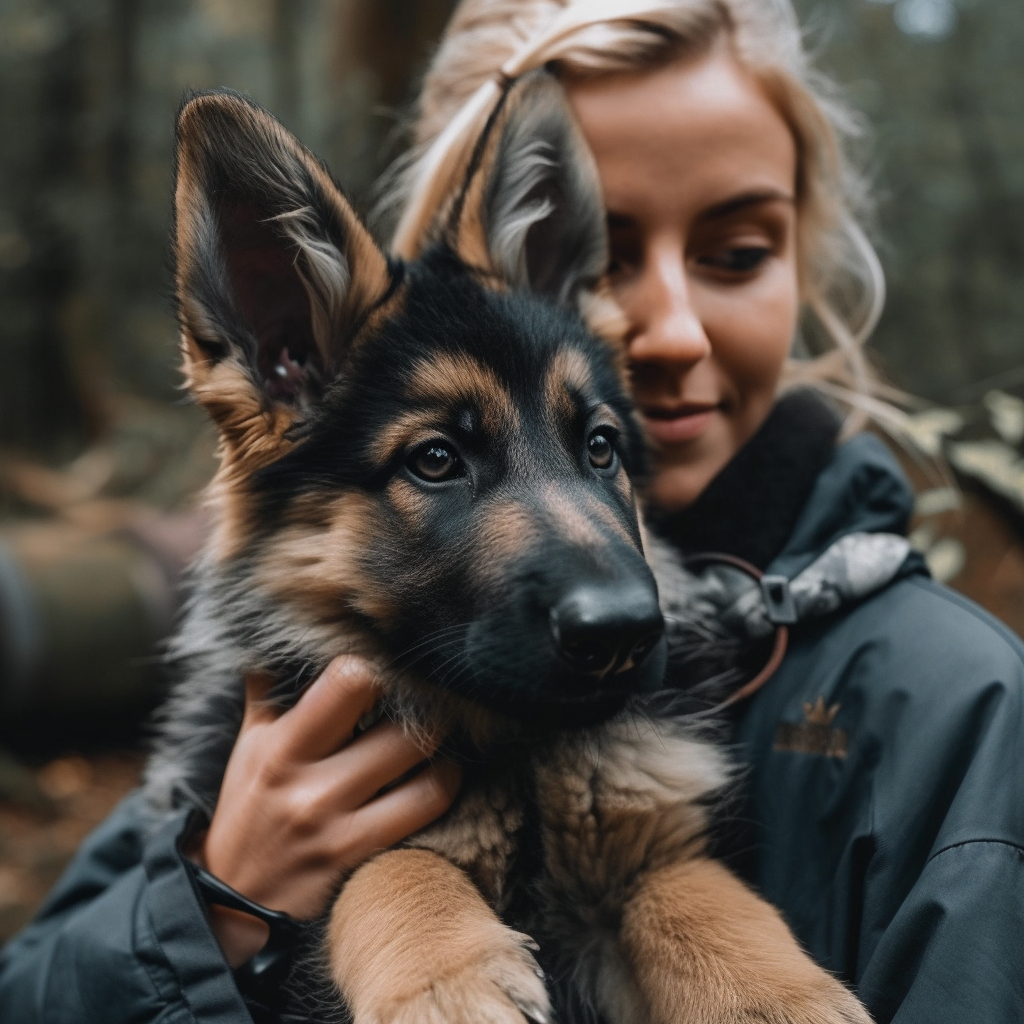Hey there, fellow dog lover! Let’s talk about a breed that’s captured our hearts time and time again – the ever-loyal, super-intelligent, and incredibly versatile German Shepherd. Ready to dive in? Let’s go!
See also: German Shepherd pictures >>

Once upon a time… History of the German Shepherd
Our story begins in the late 19th century when a German cavalry officer dreamed of creating the ultimate working dog. His vision was a breed that combined smarts, strength, and a rock-solid work ethic. By selectively breeding various herding dogs, he laid the foundation for our beloved German Shepherds. And boy, did he succeed!
Fast forward to today, and German Shepherds are rocking it in roles like police and military work, search and rescue missions, service dogs, and of course, as our best friends at home. Not too shabby, huh?
Meet the GSD: Size and Appearance

German Shepherds are a pretty big deal – literally. Males stand between 24 to 26 inches tall and tip the scales at 65 to 90 pounds. Females are slightly smaller but still pack a punch, standing 22 to 24 inches tall and weighing 50 to 70 pounds. They’ve got muscular bodies built for agility, endurance, and strength. But wait, there’s more!
Their striking features include a long, wedge-shaped head, pointy ears, and a bushy tail that’s always wagging. Their coat is typically dense and medium in length, coming in colors like black and tan, black and red, sable, or all black. So many options, right?
Brains, Brawn, and a Whole Lot of Love
What makes German Shepherds so darn popular? It’s their amazing temperament, of course! These dogs are the trifecta of loyalty, intelligence, and courage. They form deep bonds with their families and have a protective streak a mile wide.
Not only that, but they’re also highly trainable, making them excellent candidates for all kinds of work and competition. They need mental stimulation and physical activity to stay happy, so be prepared to get your hands (and paws) dirty!
Work Hard, Play Hard
As a working breed, the German Shepherd needs regular exercise to stay fit and healthy. Long walks, runs, and playtime in a secure area are all great ways to keep your furry friend engaged and active. Plus, obedience training, agility courses, and other dog sports can provide the mental stimulation they crave. After all, who doesn’t love a good challenge, right?
Remember, German Shepherds respond best to positive reinforcement training methods, so keep those treats and praises handy. And don’t forget early socialization – it’s key to raising a confident, well-rounded adult dog.
Healthy Shepherd, Happy Shepherd
Although German Shepherds are generally healthy, they can be prone to certain health issues like hip and elbow dysplasia, degenerative myelopathy, and bloat. No need to panic, though! Regular vet check-ups, a balanced diet, and a consistent exercise routine will help keep your German Shepherd in tip-top shape. They’ll be thanking you with plenty of wet-nosed kisses!
Bottom line: the German Shepherd is an all-around amazing breed with a rich history and a boatload of talents. If you’re looking for a loyal, intelligent, and hardworking companion, you’ve hit the jackpot!

Looking Good Grooming Tips
German Shepherds have a double coat that needs regular grooming to stay healthy and looking fabulous. Weekly brushing with a slicker brush or undercoat rake will help reduce shedding and prevent tangles. And during shedding season, you might want to invest in a good vacuum and brush even more frequently to keep your home fur-free.
Every few months, treat your German Shepherd to a bath (unless they’ve been rolling in something unsavory, of course). Just make sure to use a gentle dog shampoo and avoid over-bathing, as it can strip their coat of natural oils. And don’t forget the other essentials: trim their nails regularly, clean their ears, and brush their teeth for top-notch hygiene.
Feeding Your German Shepherd
A well-balanced diet is crucial for your German Shepherd’s health and well-being. Choose high-quality dog food that meets their nutritional needs, considering their age, size, and activity level. Keep an eye on their weight and adjust food intake as needed to prevent obesity, which can lead to health problems.
Divide your German Shepherd’s daily food into two or three smaller meals to maintain a healthy metabolism and reduce the risk of bloat. Always provide fresh water, and consult your veterinarian if you have concerns about their dietary needs.
Living with a German Shepherd
German Shepherds can adapt to various living situations, including apartments, as long as they get enough daily exercise and mental stimulation. However, they thrive in homes with a securely fenced yard where they can safely play and explore.

Their protective nature means German Shepherds can be cautious around strangers. Proper socialization from an early age is essential to help them become comfortable around new people and animals. Obedience classes or puppy socialization groups are excellent ways to expose your German Shepherd to different situations and build their confidence. After all, who doesn’t love a social butterfly?
Is a German Shepherd Your Perfect Match?
When considering if a German Shepherd is the right fit for your family, think about your lifestyle, living situation, and ability to meet their exercise and training needs. These intelligent, loyal dogs make excellent companions for active households and those who appreciate their protective nature.
With proper care, training, and socialization, a German Shepherd can be a fantastic addition to your family. So, what are you waiting for? Go ahead and welcome a German Shepherd into your life – you won’t regret it!
Other Large Dog Breeds:
+ Cane Corso
+ Pitbull
+ Siberian Husky
Related Image Galleries:
+ German Shepherd pictures